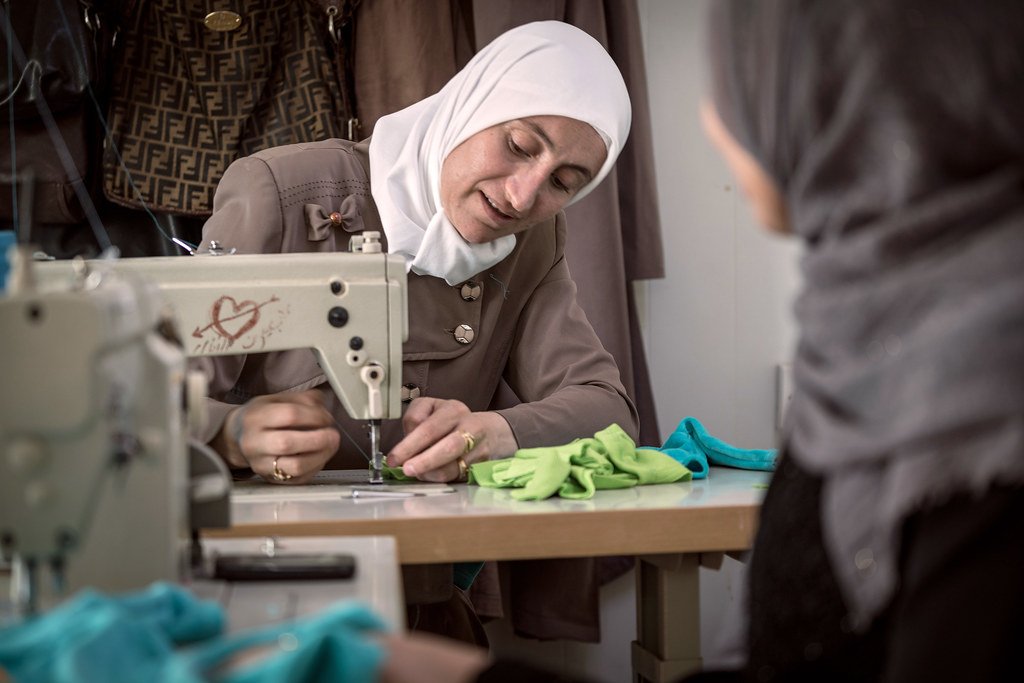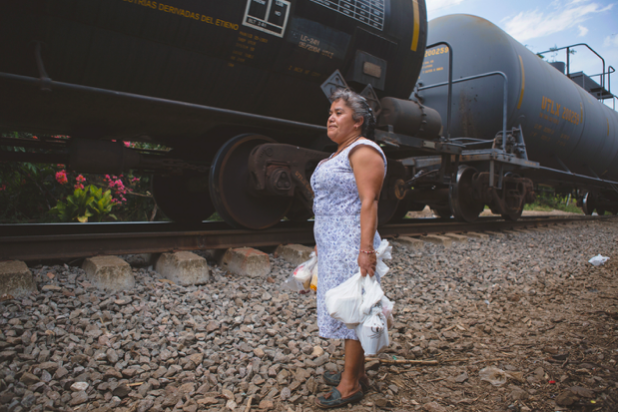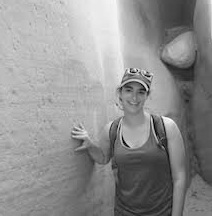Jordan opened the Za'atari refugee camp in 2012, which has now gradually turned into a permanent settlement. Za’atari is home to an estimated 80,000 refugees, more than half of which are children.
Less than 10 miles from the Syrian border sits the Za’atari refugee camp in Jordan’s desert. A camp that began as a collection of tents has now become an urban settlement with thousands of portacabins. At its peak, Za’atari hosted 150,000 refugees, today the camp hosts 80,000. For many it’s the closest thing to home, however many still struggle to find work to make a steady income.
Syrian Refugee Learning To Sew. UN Women Gallery. CC BY-NC-ND 2.0
The Za’atari refugee camp has all of the components that make up a city, including 32 schools, 58 community centers and eight medical clinics. Despite all of this aid, there are still insufficient resources for the influx of refugees housed there. Less than a fifth of the population has current work permits. Many men work illegally to support their families. Many women are excluded from employment and have to fight against social norms that call for them to stay home. However, the camp has provided classes geared towards women to teach them basic skills to help them earn an income. The benefits of these classes is to restore routine in their lives, fight off cultural norms and aid in their mental healing. It also helps them regain purpose and become self-sufficient.
Children make up 58% of the population in Za’atari and an estimated 22,000 children are enrolled in school. They attend makeshift classes, but organizations are calling for an increase in financial aid. There is a need for more trained teachers and improved safety measures to facilitate the children’s access to class. Many girls face harassment and abuse as they walk to classes or as they walk back home. In addition, there’s a lack of resources for the children that need extra support in learning the material. The civil war has impacted where the children stand against their global peers in regards to education. Half of Syrian middle school-aged children are unable to read at a second-grade level and an average of 59% of middle school students could not do a second-grade math problem. In addition, only 1% of youth pursue higher education due to difficulty in obtaining transcripts, unfamiliar entrance exams, a language barrier and lack of funds.
The trauma experienced by both adults and children from the war and subsequently the resettlement process into another country, has led to a serious impact on the mental health of refugees. More than three-quarters of Syrian refugees have mental health symptoms. The violence, killings of loved ones and peers, destruction and frequent fear for their lives has caused PTSD, depression and anxiety, as well as intellectual and cognitive difficulties. To escalate the situation, there’s a stigma towards individuals with mental illness in Middle Eastern countries. Therefore, not many express the difficulties they face and the trauma they have experienced. The Za’atari camp offers mental health aid to the individuals and guides them towards healing so they are able to lead productive and mentally stable lives in the future.
The cost of keeping the 530-hectare camp operating every single day costs $500,000. Each person in the family (regardless of age) receives JOD 23 ($32) a month to cover food expenses. The money can be used in the two contracted supermarkets (Safeway and Tazweed) located in the camp or the four bread selling points. This allows the camp refugees to choose from a variety of produce to feed their families, bringing a sense of normalcy. Moreover, each family also receives 35 liters of water a day used for cleaning, drinking, eating and flushing the toilet. The water is filtered and chlorinated to meet the standards of tap water across Jordan. Water is brought in by dozens of tanker trucks or pumped from desert boreholes that directly feed water to the porta cabins. Electricity is provided through the solar power plant in Za’atari and has eased families' living conditions in the camp. It has improved their safety and security while facilitating food storage and allowing children longer hours to do their homework. The plant has helped save $5 million per year in electricity bills.
The Za’atari camp is a safe place where many aid workers and volunteers live. However, many forms of crime still exist: theft, violence, smuggling. Crime erupts as people are frustrated with their living situation and the limited resources available to them. There is little formal employment available within the camp. This results in refugees selling personal items, supplies received from organizations and, at times, prostitution. A young refugee girl said that she sells her body to support her family back home during the war. She makes, on average, $70 a day and although she fears persecution by Jordanian authorities, she explains that it’s her only way to help her family. Prostitution in Jordan is illegal and punishable. If foreign women and men are found guilty, they can be deported. Desperate families will at times sell their young daughters and forcefully marry them to men in the refugee camp.
The camp will continue to host and support refugees through education, livelihood opportunities and work permits. This will alleviate the trauma and circumstances lived by many Syrians. The Za’atari leaders hope to return a sense of dignity to the refugees and bring opportunity to the camp inhabitants with the resources provided.
To Get Involved
UNHCR helps provide aid to Syrian refugees who have fled. They provide shelter kits and non-food items as well as protection services and psychosocial support to those who remain in Syria.
To learn more about UNHCR click here.
To support the Syrian refugees through UNHCR click here.
RELATED CONTENT:
PODCAST: Exploring Jordan with Yulia Denisyuk
Jennifer Sung
Jennifer is a Communications Studies graduate based in Los Angeles. She grew up traveling with her dad and that is where her love for travel stems from. You can find her serving the community at her church, Fearless LA or planning her next trip overseas. She hopes to be involved in international humanitarian work one day.









